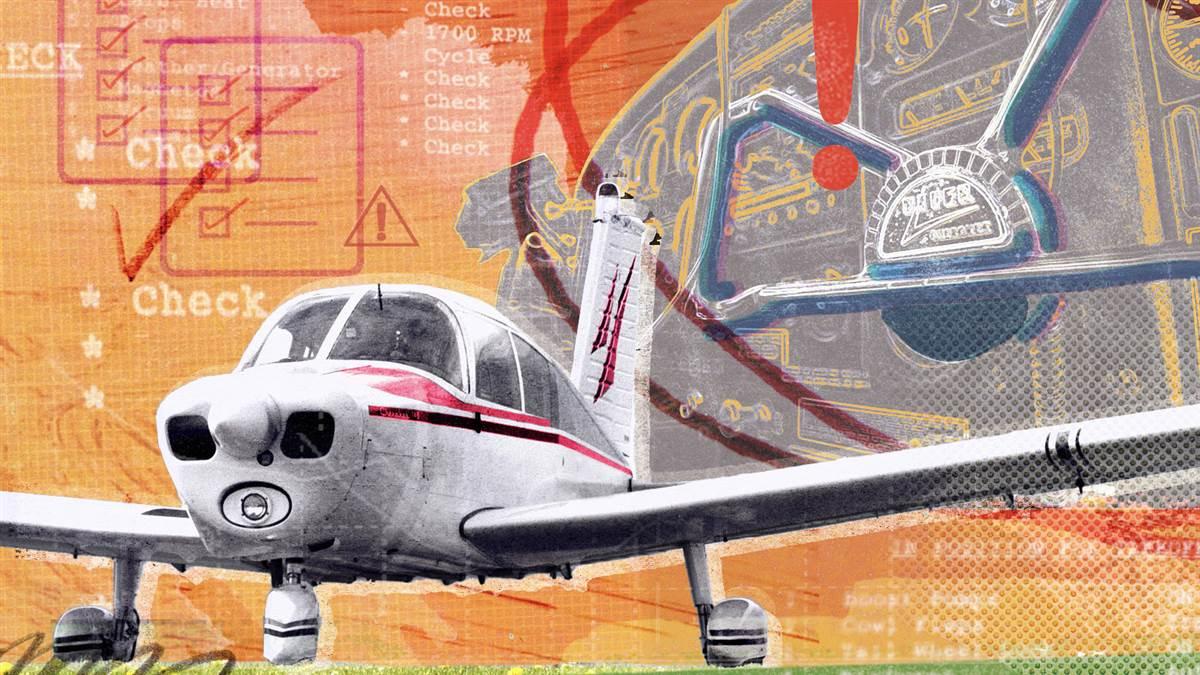My first flight
Something wasn’t quite right
By Vincent Valentine
In 1978, I was a college sophomore when I went skydiving, and it was a blast. Being in the air was invigorating. I had no fear.

My first thoughts were, when I am done with college and have a job I’m going to learn to fly. Well, I graduated, became an electrical engineer, and my career got in the way of learning to fly. So, I thought when I retire, I will have time to become a pilot. So here I am, retired and realizing I have fewer years in front of me than behind me. But I still want to be a pilot, so I carry on.
After completing ground school, I was ready for my first flight instruction. I had never encountered a Piper PA–28A up close before. The preflight inspection seemed straightforward using the checklist, until I opened the engine cowling. There it was, the Lycoming engine—never saw one until that moment. I had rebuilt my 1970 Chevy’s 350-cubic-inch small-block V8, so I relied on that knowledge and my engineering experience to examine and inspect the usual and what I thought might be unusual. The CFI was surprised when I identified a loose terminal connection. He called over one of the maintenance techs to check it out.
After a few minutes, the maintenance tech yelled over to me and said, “It’s OK now, you are all set.” The loose terminal connection was fixed.
Since this was my first flight, my CFI would take off, climb, and reach straight and level flight before I took control. My home airport is busy, and ATC communicates at the speed of light. I was having trouble understanding ATC, but my CFI told me not to worry and that he would tell me what to say.
During takeoff and climb we had a little light chop, but this is normal in New England and didn’t bother me. At altitude it was my turn to take the controls. I was instructed to climb 1,000 feet. I pulled back slightly on the yoke, but nothing seemed to happen. My CFI reassured me that the Piper was inherently stable and took control to demonstrate its capability. Without holding onto the yoke, he tapped it gently to one side; the airplane banked momentarily, then returned to straight and level flight. He did it again with an opposite bank and said, “See, there is nothing to worry about.”
My turn at the controls once again, and I had so much trouble trying to understand the response I was getting that I broke out in a profuse sweat. Thinking all the while that This just can’t be, flight controls on a dinky little airplane can’t be this difficult. Noticing I was nervous, my instructor asked if I’d like to continue, and I said I’d really like to, but my situational awareness had gone to zero and I wasn’t comfortable. We landed and returned to the hangar.
I scheduled a second flight with the airplane one week later. Anxious to determine if there was something wrong with me, I arrived at the hangar two hours early to begin the preflight tasks. I discovered in the airplane’s squawk sheet a comment from a seasoned pilot who had flown the airplane soon after I took my first flight. It read: “Stiff yoke.” Can you imagine my relief?
During my second flight, the controls felt like power steering, and I was able to perform takeoff, climb, turns, and descend without an issue.
 My turn at the controls once again, and I had so much trouble trying to understand the response I was getting that I broke out in a profuse sweat.
My turn at the controls once again, and I had so much trouble trying to understand the response I was getting that I broke out in a profuse sweat.

